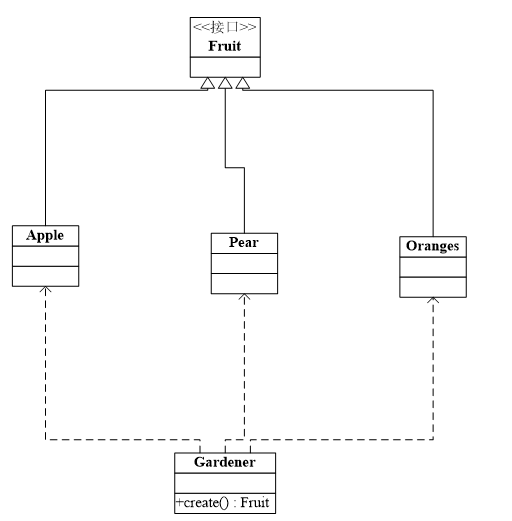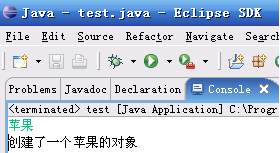1、设计四个类,分别是:(知识点:抽象类及抽象方法)
(1)Shape表示图形类,有面积属性area、周长属性per,颜色属性color,有两个构造方法(一个是默认的、一个是为颜色赋值的),还有3个抽象方法,分别是:getArea计算面积、getPer计算周长、showAll输出所有信息,还有一个求颜色的方法getColor。
(2)2个子类:
1)Rectangle表示矩形类,增加两个属性,Width表示长度、height表示宽度,重写getPer、getArea和showAll三个方法,另外又增加一个构造方法(一个是默认的、一个是为高度、宽度、颜色赋值的)。
2)Circle表示圆类,增加1个属性,radius表示半径,重写getPer、getArea和showAll三个方法,另外又增加两个构造方法(为半径、颜色赋值的)。
(3)一个测试类PolyDemo,在main方法中,声明创建每个子类的对象,并调用2个子类的showAll方法。
public abstract class Shape { protected double area;// 面积 protected double per;// 周长 protected String color;// 颜色 public Shape() { } public Shape(String color) { this.color = color; } public abstract void s(); public abstract void c(); public abstract void showAll(); }
public class Rectangle extends Shape { double width; double height; public Rectangle() { } public Rectangle(double width, double height, String color) { super(); this.width = width; this.height = height; this.color = color; } @Override public void s() { area = width * height; } @Override public void c() { // TODO 自动生成的方法存根 per = (width + height) * 2; } @Override public void showAll() { // TODO 自动生成的方法存根 System.out.println("矩形面积为:" + area + ",周长为:" + per+",颜色:"+color); } }
public class Circle extends Shape { double radius; public Circle() { } public Circle(double radius, String color) { this.color = color; this.radius = radius; } @Override public void s() { // TODO 自动生成的方法存根 area = radius * radius * 3.14; } @Override public void c() { // TODO 自动生成的方法存根 per = 2 * radius * 3.14; } @Override public void showAll() { // TODO 自动生成的方法存根 System.out.println("圆的面积为:" + area + ",周长为:" + per+",颜色:"+color); } }
public class PolyDeom { public static void main(String[] args) { Circle circle = new Circle(2,"green"); Rectangle rectangle = new Rectangle(3,5,"red"); circle.s(); circle.c(); circle.showAll(); rectangle.s(); rectangle.c(); rectangle.showAll(); } }
2、Cola公司的雇员分为以下若干类:(知识点:多态)
(1) ColaEmployee :这是所有员工总的父类,属性:员工的姓名,员工的生日月份。方法:getSalary(int month) 根据参数月份来确定工资,如果该月员工过生日,则公司会额外奖励100 元。
public class ColaEmployee { String name; int month; public ColaEmployee(){ } public ColaEmployee(String name,int month){ this.name = name; this.month = month; } public double getSalary(int month){ return 0; } }
(2) SalariedEmployee : ColaEmployee 的子类,拿固定工资的员工。属性:月薪
public class SalariedEmployee extends ColaEmployee { double monSalary; public SalariedEmployee(String name,int month,double monSalary){ super(name,month); this.monSalary = monSalary; } public double getSalary(int month){ if(super.month==month){ return monSalary+100; }else{ return monSalary; } } }
(3) HourlyEmployee :ColaEmployee 的子类,按小时拿工资的员工,每月工作超出160 小时的部分按照1.5 倍工资发放。属性:每小时的工资、每月工作的小时数
public class HourlyEmployee extends ColaEmployee { private int hourSalary; private int hourNum; public HourlyEmployee(String name,int month,int hourSalary,int hourNum){ super(name,month); this.hourSalary = hourSalary; this.hourNum = hourNum; } public double getSalary(int month){ if(super.month==month){ if(hourNum>160){ return hourSalary*160+hourSalary*(hourNum-160)*1.5+100; }else{ return hourSalary*hourNum+100; } }else{ if(hourNum>160){ return hourSalary*160+hourSalary*(hourNum-160)*1.5; }else{ return hourSalary*hourNum; } } } }
(4) SalesEmployee :ColaEmployee 的子类,销售人员,工资由月销售额和提成率决定。属性:月销售额、提成率
public class SalesEmployee extends ColaEmployee { private int monthSales; private double royatyRate; public SalesEmployee(String name,int month,int monthSales,double royaltyRate){ super(name,month); this.monthSales = monthSales; this.royatyRate = royaltyRate; } public double getSalary(int month){ if(super.month==month){ return monthSales*royatyRate+100; }else{ return monthSales*royatyRate; } } }
(5) 定义一个类Company,在该类中写一个方法,调用该方法可以打印出某月某个员工的工资数额,
写一个测试TestCompany,在main方法,把若干各种类型的员工放在一个ColaEmployee 数组里,并单元出数组中每个员工当月的工资。
public class Company { public void getSalary(ColaEmployee a,int month){ System.out.println(a.name+"在"+month+"月的月薪为"+a.getSalary(month)+"元"); } }
public class TestCompany { public static void main(String[] args) { // TODO Auto-generated method stub ColaEmployee[] ae1={ new SalariedEmployee("SalariedEmployee",5,8000), new HourlyEmployee("hourlyEmplotee",5,60,250), new SalesEmployee("salesEmployee",4,60000,0.4) }; for(int i=0;i<ae1.length;i++){ new Company().getSalary(ae1[i],5); } } }
3、利用接口实现动态的创建对象:(知识点:接口 )
(1)创建4个类
1苹果
2香蕉
3葡萄
4园丁
(2)在三种水果的构造方法中打印一句话.
以苹果类为例
class apple
{
public apple()
{
System.out.println(“创建了一个苹果类的对象”);
}
}
(3)类图如下:

(4)要求从控制台输入一个字符串,根据字符串的值来判断创建三种水果中哪个类的对象。

public interface Fruit { }
public class Apple implements Fruit { public Apple(){ System.out.println("创建了一个苹果类对象"); } }
public class Banana implements Fruit { public Banana(){ System.out.println("创建了一个香蕉类对象"); } }
public class Grape implements Fruit { public Grape(){ System.out.println("创建了一个葡萄类对象"); } }
import java.util.Scanner; public class Gardener { public void creater() { String m = ""; Scanner in = new Scanner(System.in); m = in.nextLine(); if(m.equals("苹果")){ new Apple(); }else if(m.equals("香蕉")){ new Banana(); }else if(m.equals("葡萄")){ new Grape(); }else{ System.out.println("请输入正确的对象"); } } }
public class FruitTest { public static void main(String[] args) { // TODO Auto-generated method stub new Gardener().creater(); } }



